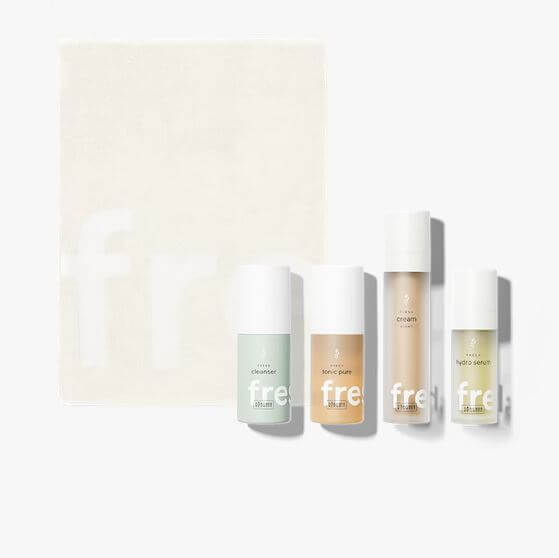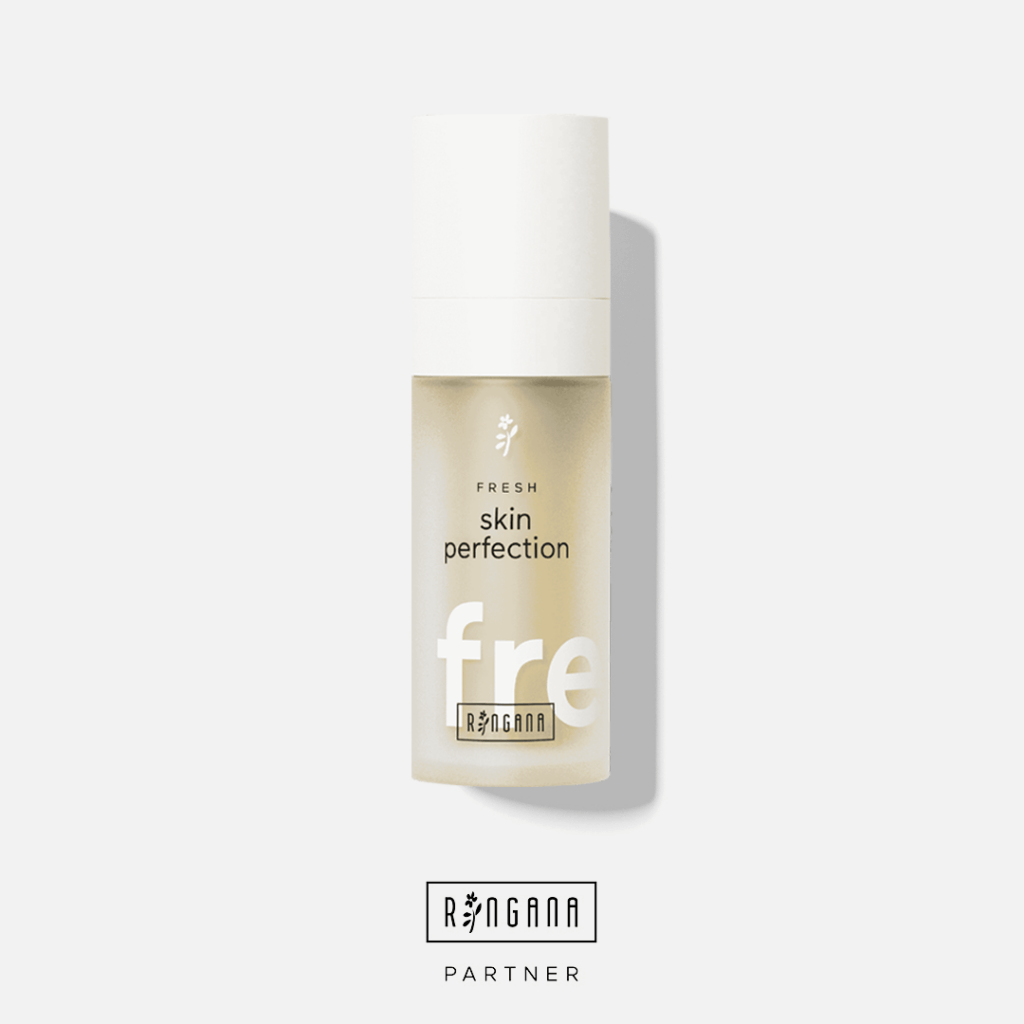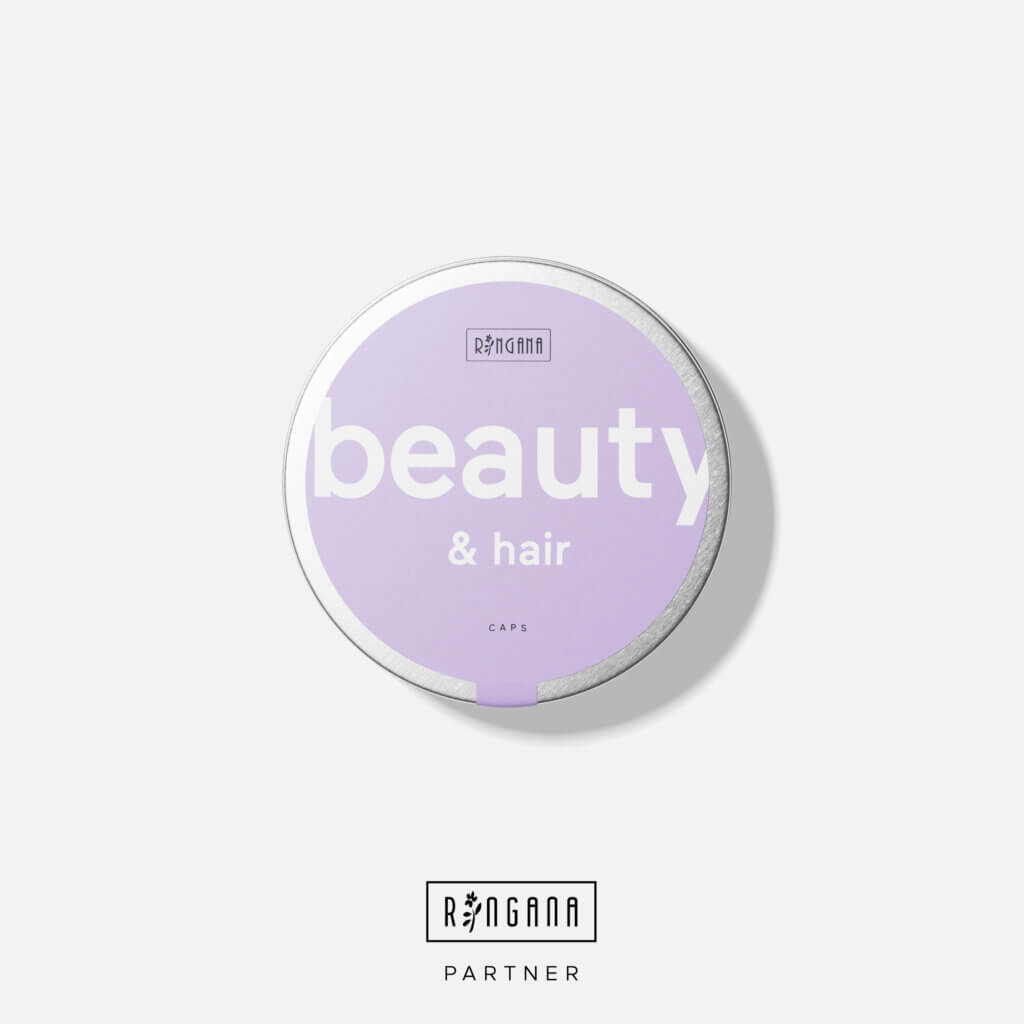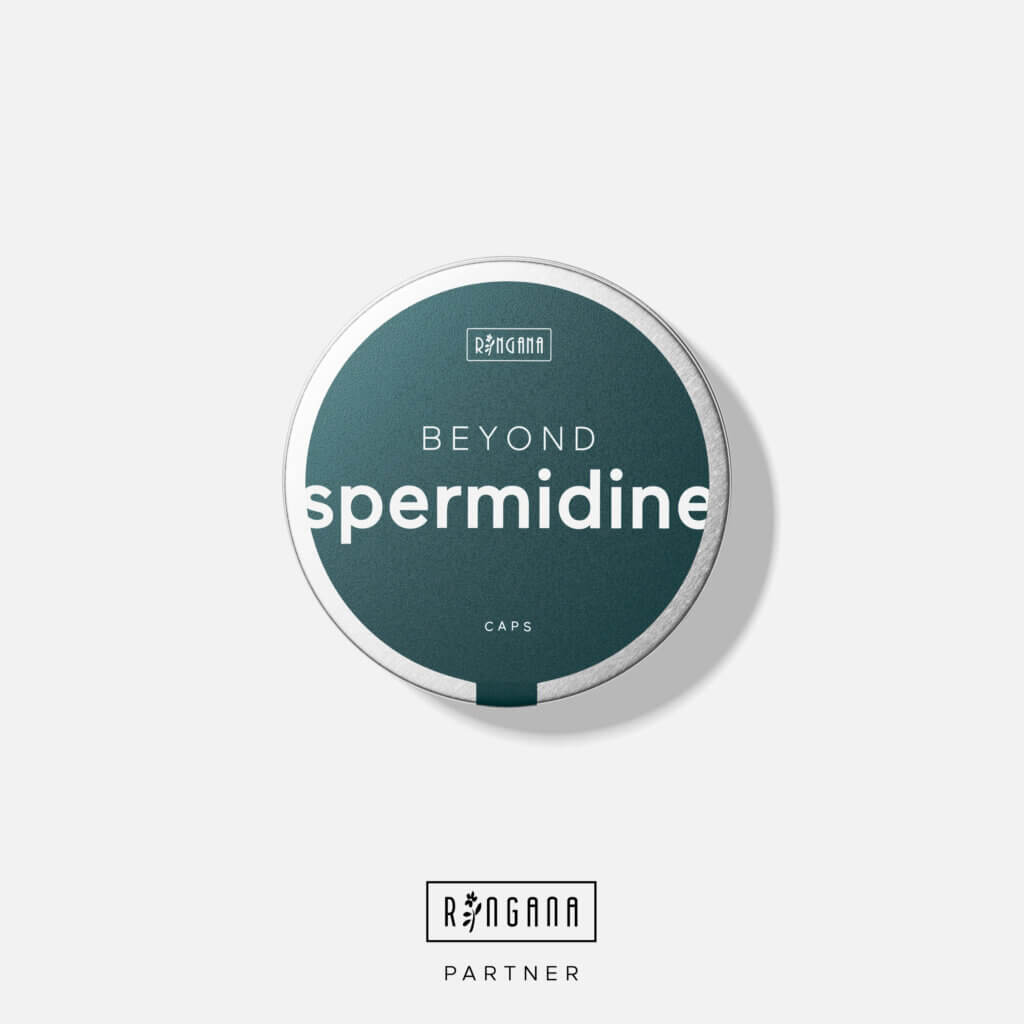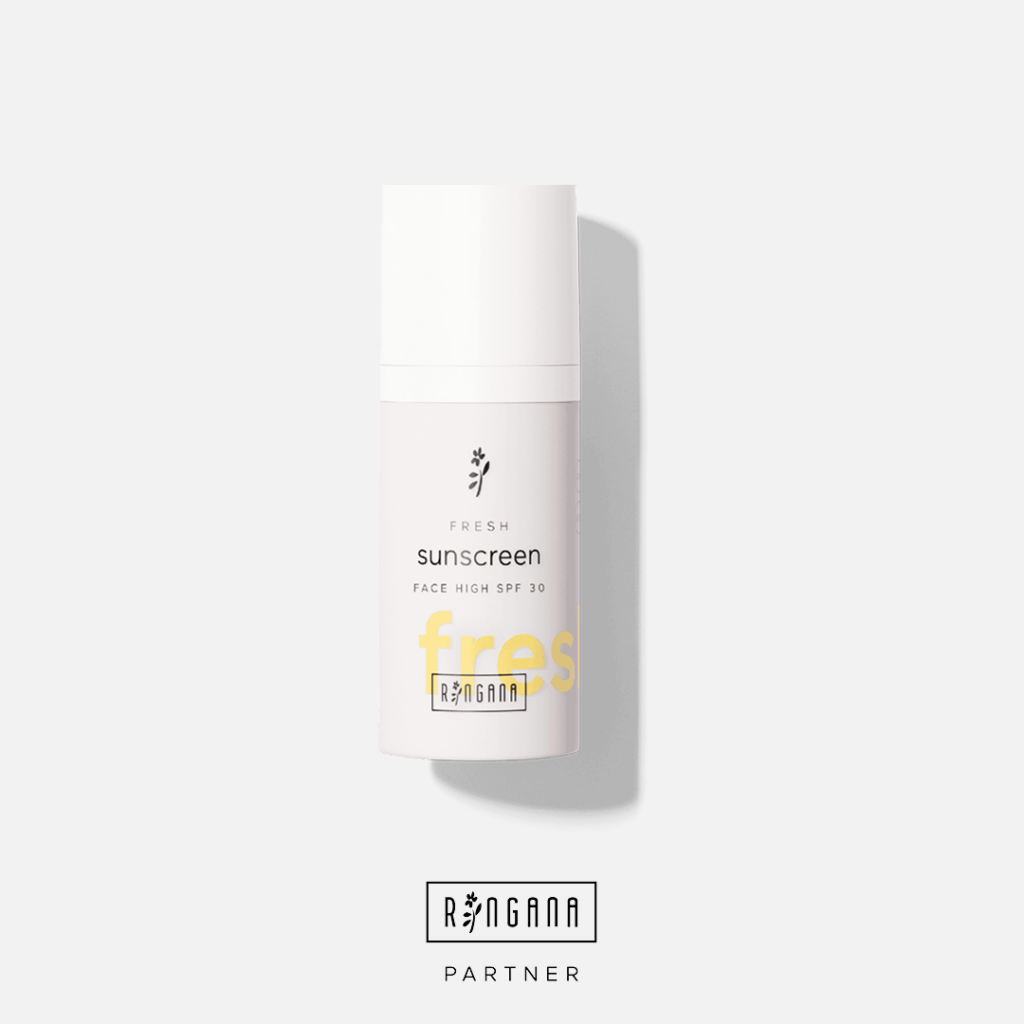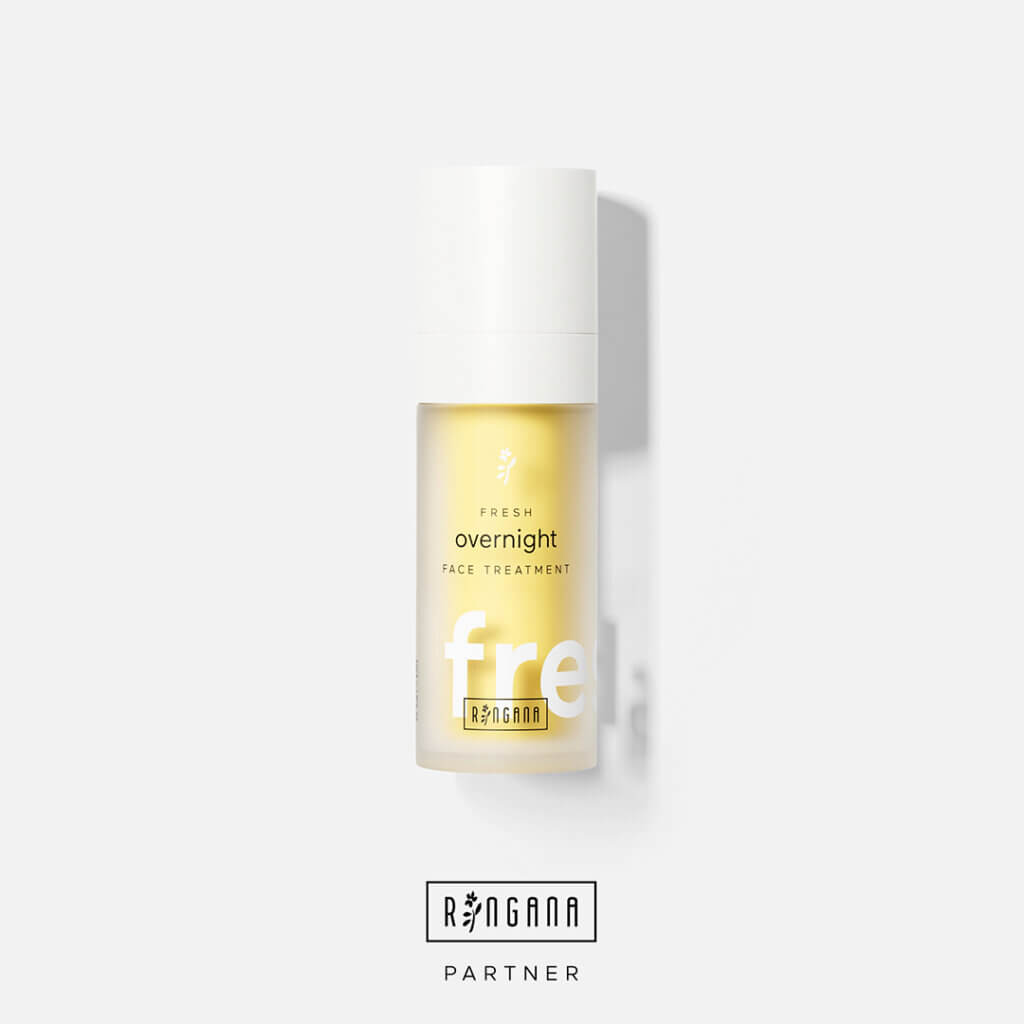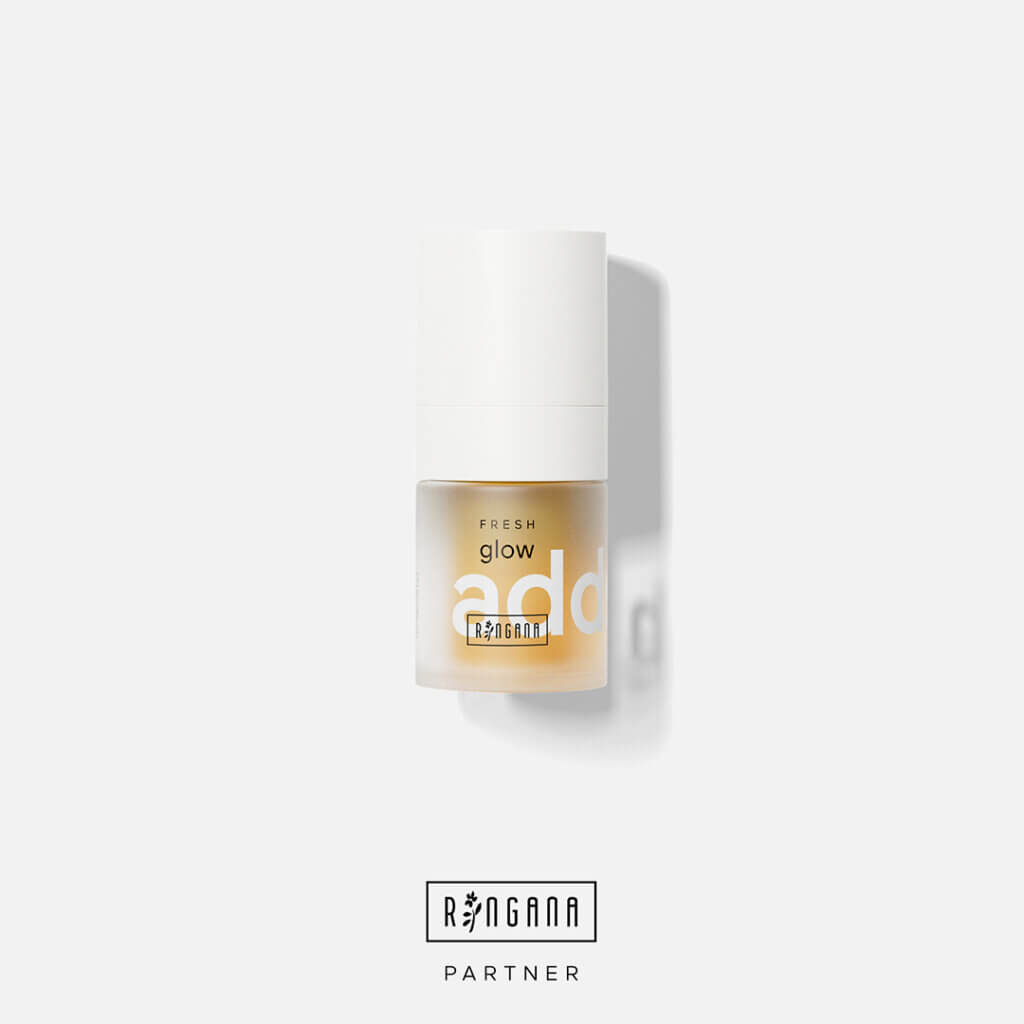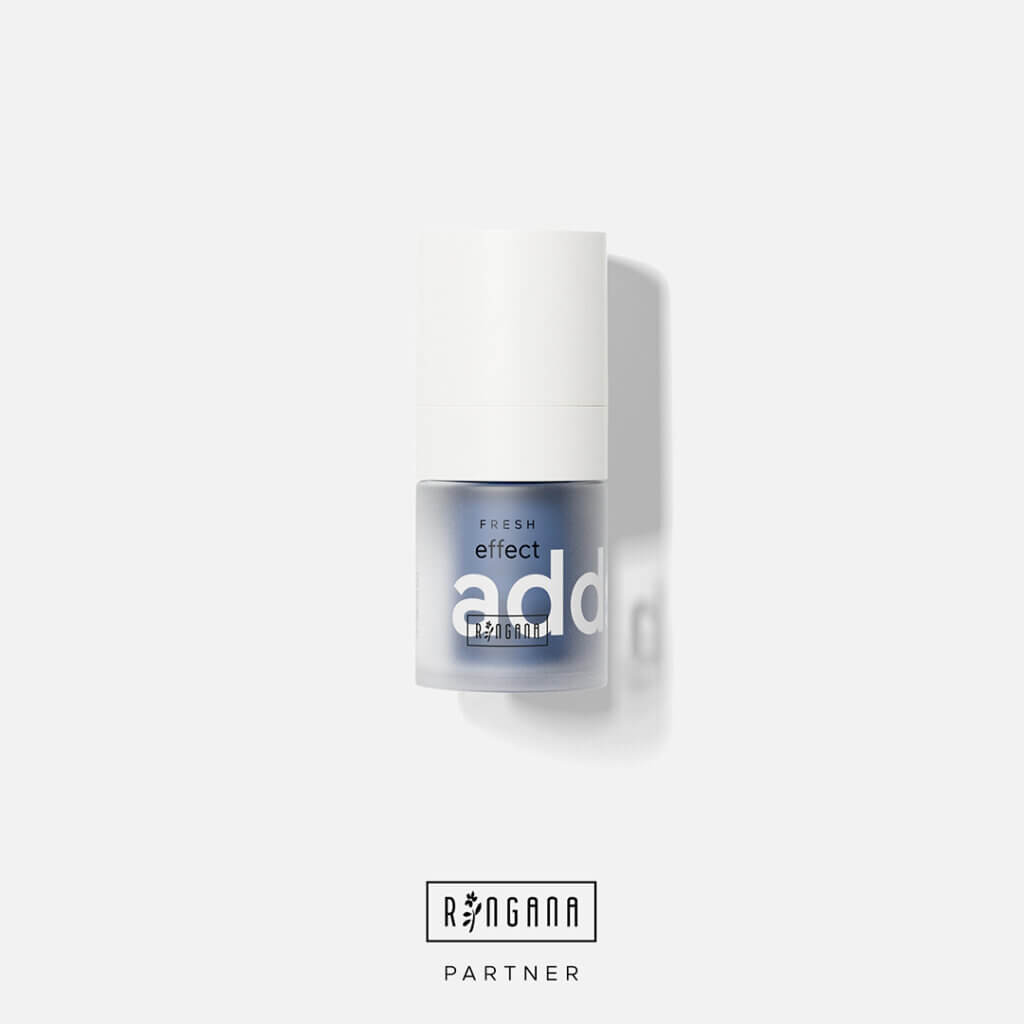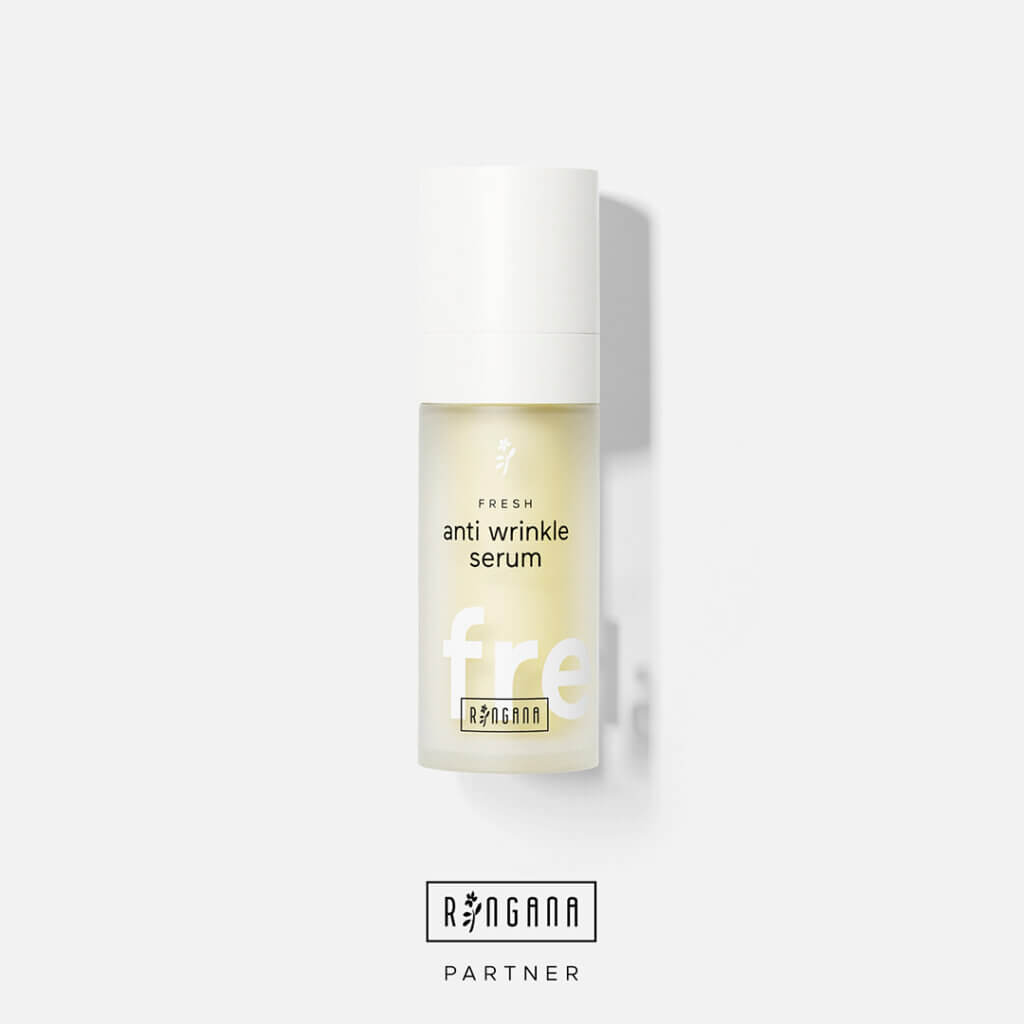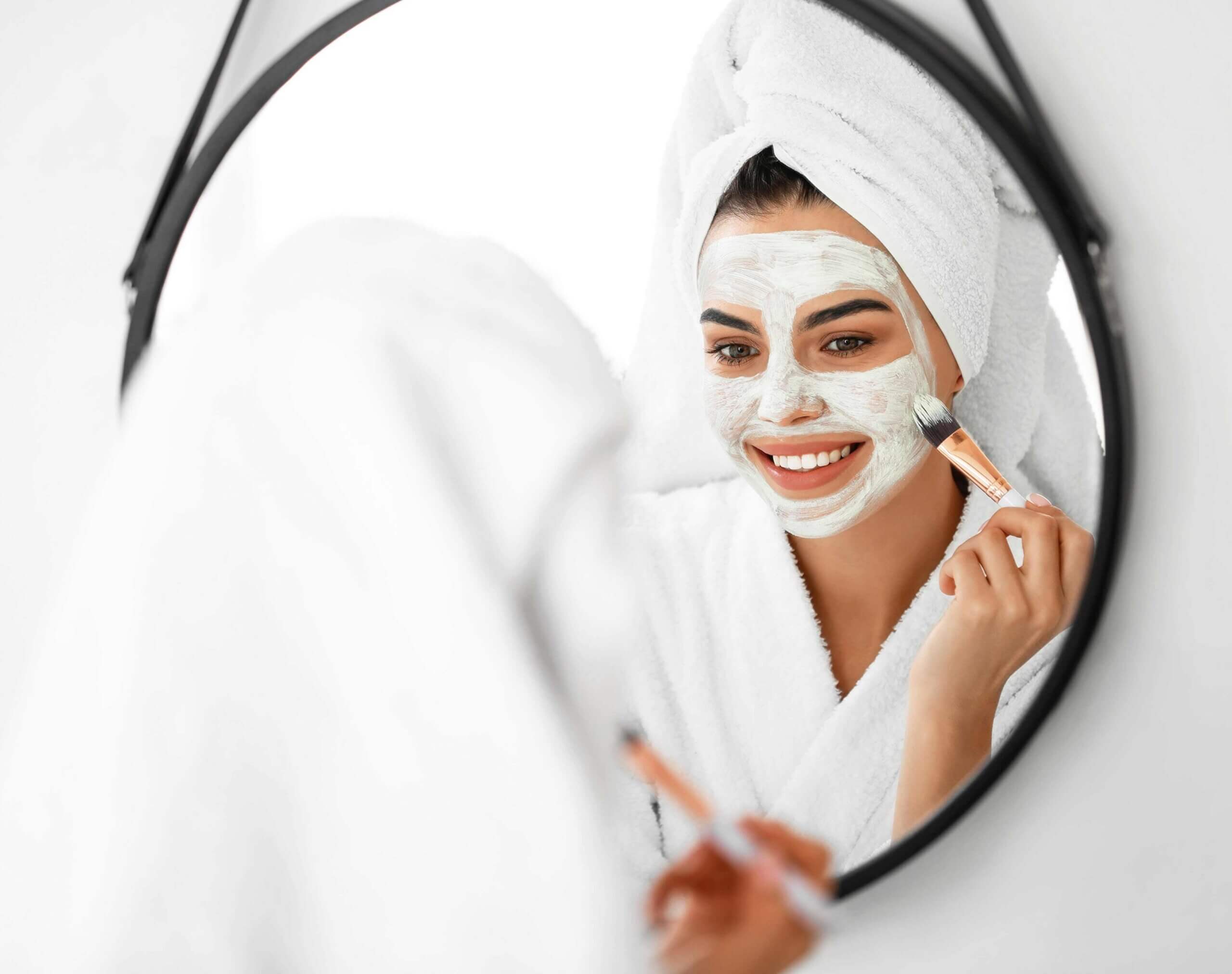Hello lovelies, today I’d like to talk to you about a topic that concerns many of us: oily and blemish-prone skin. There is hardly anything more frustrating than looking in the mirror every morning and realising that another horde of pimples has spread across our face. But don’t worry – you’re not alone! In this article, I’m going to share five steps with you to help make your skin glow again.
The root of the problem: What causes oily and blemished skin?
The causes of oily and blemished skin can be many and varied. Stress, hormonal changes, environmental pollution and the wrong skincare products are just some of them. When our skin produces excessive amounts of sebum, pores clog more easily, which can lead to spots, blackheads and other blemishes. It is important to identify the individual triggers so that we can take targeted action against them. We should also pay particular attention to our inner skin – the gut. Contrary to popular belief, the skin is not our largest organ – it’s the intestine.
While the skin covers an area of just 2 square metres, the intestine with all its villi and folds could almost stretch across a football pitch. So if our inner skin has problems, we’ll see it reflected on our outer skin.
“
A smile is the most beautiful make-up a girl can wear.
Marilyn Monroe
The wrong diet: foods that promote oily skin
Our diet plays a crucial role in the health of our skin. In addition to fatty and highly processed foods, those with a high glycaemic index can also contribute to oily skin. Foods such as sugary drinks, white flour products, alcohol and sweets – especially chocolate – can upset the balance of gut bacteria and cause blood sugar levels to rise rapidly. This, in turn, can trigger increased insulin production, which stimulates sebum production in the skin.
The effect is twofold: firstly, these foods can directly increase sebum levels, clogging pores and leading to blemishes. Secondly, they can promote inflammation in the body, which in turn increases skin sensitivity and contributes to skin problems.
It is therefore advisable to consume foods with a high glycaemic index only in moderation and instead focus on complex carbohydrates such as wholegrains, pulses and vegetables, which keep blood sugar levels more stable and support skin health.
Nature's remedies: foods that prevent oily skin
But there is also hope in the form of foods that can help our gut – and ultimately our skin – to regenerate and restore balance.
Anti-inflammatory foods such as high-quality plant oils (linseed, olive, algae and rapeseed oil), spices such as turmeric, ginger or cinnamon, and plenty of vegetables and fruit rich in antioxidants and vitamins (especially C and E) are true miracle workers for the skin. Avocados, berries, green leafy vegetables and nuts are just a few examples of foods that can make your skin glow from within.
Bitter substances that support the liver – found in rocket, dandelion or radicchio – also promote a healthy gut flora.
promote a healthy gut flora.
Fermented foods such as sauerkraut, kimchi, miso and kombucha further boost the gut microbiome and with it, your skin balance.
So remember: eating is much more than energy and enjoyment. Through food, we supply our body – and therefore our skin – with vital vitamins and nutrients. The right food choices play a decisive role in achieving beautiful, healthy skin. Anyone suffering from inflammatory skin conditions such as eczema or acne should pay particular attention to their diet.

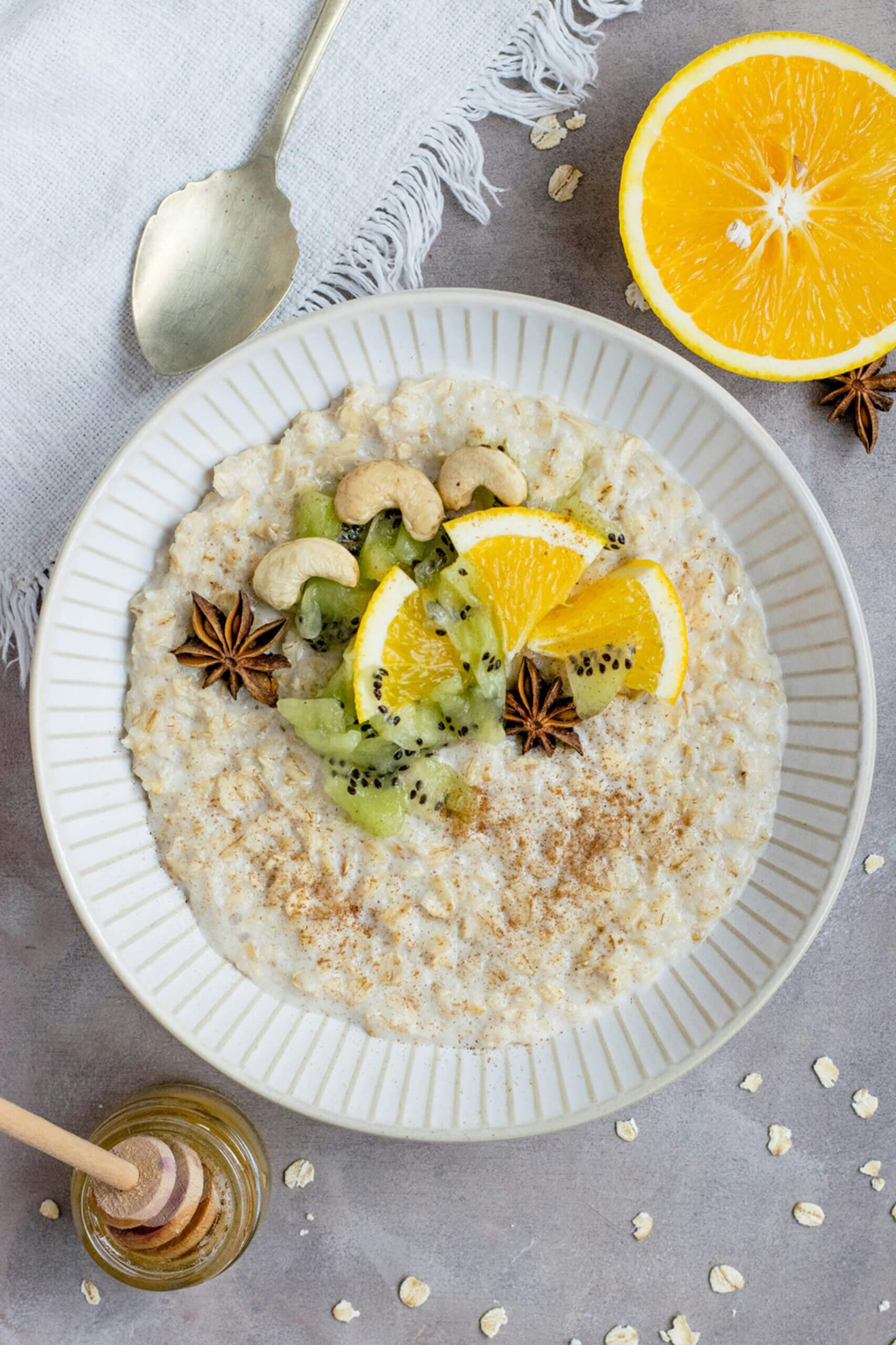
Vegan vs. conventional: What influence does diet have on the skin?
One question many people ask is about the impact of animal products compared to a purely plant-based diet. Animal products such as meat, sausages and dairy contain a variety of substances that can negatively affect the skin. Studies [1, 2] show that the hormones contained in cow’s milk can cause skin conditions such as acne and atopic dermatitis.
Meat and processed meats often contain saturated fatty acids, which can increase sebum production and accelerate wrinkle formation. Excessive consumption can clog pores and cause blemishes.
Dairy products such as milk, cheese and yoghurt often contain hormones produced by animals. These can affect the human hormone balance and lead to skin problems such as acne. In addition, the high fat content of some dairy products can further stimulate sebum production and cause oily skin.
Another factor is that animal products are often treated with antibiotics and hormones to promote growth and prevent disease. These residues can enter our bodies through food and disrupt the natural balance – again with negative effects on the skin.
In contrast, a vegan diet offers a wealth of plant-based foods rich in antioxidants, vitamins and minerals that can support skin health. Fruits, vegetables, wholegrains, legumes and nuts provide important nutrients that nourish the skin from within and help maintain a radiant, healthy complexion.
Of course, the effects of diet on the skin vary from person to person. Some people are more sensitive to certain foods than others. Nevertheless, evidence suggests that a plant-based diet can have positive effects by reducing inflammation, regulating sebum production and improving overall skin health. A vegan, balanced diet is therefore not only beneficial for the body, but also for the skin.
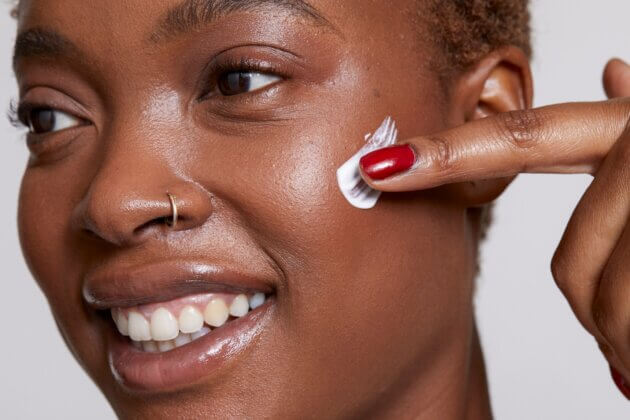
The right facial care: 5 steps against oily and blemish-prone skin
I know from personal experience how frustrating it is when you need twice as long in the bathroom in the morning to cover up those nasty blackheads and sometimes inflamed pimples. Once covered, I still never really felt comfortable. I often had the feeling that people were staring straight at my pimples. And going out without make-up was unthinkable for me. Looking back, that sounds crazy, of course. But when you don’t feel comfortable in your own skin, your thoughts can play tricks on you.
After many years of trial and error, I discovered the best facial care for me: FRESH skin care light for oily skin. The routine consists of four steps – cleanser, tonic pure, hydro serum and cream light – plus a peeling twice a week as an extra care step.
Step 1: The cleansing water gently and thoroughly removes dirt and make-up.
Step 2: The high-quality tonic pure clarifies oily, blemish-prone skin and provides moisture.
Step 3: The hydro serum acts like a thirst quencher for the skin and provides it with maximum hydration.
Step 4: The light face cream was specially created for skin prone to shine and impurities.
Step 5: The stimulating peeling with exfoliating particles of raspberry, blueberry, apricot and pomegranate removes dead skin cells and stimulates skin renewal. The skin absorbs the nourishing active ingredients particularly well, leaving it radiantly beautiful.
Tip:
I have purchased the ADDS repair which I mixed with the anti wrinkle serum. The ADDS provides irritated skin with soothing and clarifying ingredients. The special ingredients have a balancing and pore-refining effect and regulate the body’s own sebum production.
It took about 4–6 weeks for my skin to adjust to the new routine. But once it did, things improved day by day. Today, I couldn’t imagine using anything else.
The products are made only with the finest, most effective natural actives. They are free from preservatives, fragrances, colourings and fillers, contain no microplastics and are of course vegan and cruelty-free. Dermatologically tested and suitable for sensitive skin, they contain organic ingredients and are freshly produced in small batches – only a few days old when they arrive at your home.
shop
The perfect everyday care programme for beauty and well-being. This light routine was specially created for skin prone to shine, redness and impurities.
10 tips for clear skin
In addition to the right diet & facial care, there are other measures we can take to combat oily and blemished skin.
1. Drink water: It is important to drink enough water to keep your skin hydrated and to support the body’s natural detox processes. Hydration from within helps your skin look fresher, clearer and more balanced.
2. Reduce stress : And don’t forget: reducing stress through meditation, yoga or simply allowing yourself a proper break can work wonders for your skin. Stress hormones are known to influence sebum production and inflammation, so calming your mind also calms your skin.
3. Healthy diet: As we have already seen in detail, a healthy, balanced and preferably plant-based diet plays a decisive role in achieving beautiful, healthy skin. By supplying your body with vitamins, antioxidants and fibre, you’re giving your skin the building blocks it needs to stay radiant and resilient.
4. Bedroom hygiene: Change your pillowcase once or twice a week. This simple habit helps prevent a build-up of oil, sweat and bacteria that can lead to clogged pores and blemishes while you sleep.
5. Avoid “over-care”: There is a lot of truth in the saying “less is more” when it comes to skincare. Using too many products can irritate the skin. Sometimes ingredients are not well-matched and cancel each other out – or worse, cause reactions. And if you layer too many creams and treatments, your pores may become clogged. A few carefully chosen, gentle products are often enough to keep your skin healthy.
6. Facial cleansing: Wash your face in the morning and evening. During the day, dirt builds up on the skin – from being outside, holding your phone to your ear or simply touching your face. Overnight, oil accumulates on the skin. If you don’t cleanse it away, your pores can already be clogged before the day has begun.
7. Don´t touch your face too often: Our hands are covered with microscopic bacteria and natural oils. Every time you touch your face, you transfer them to your skin, which can encourage blemishes.
8. Don´t over-wash: Twice a day is enough. Washing your face more often can strip the skin and trigger it to produce even more oil to prevent dryness – which only makes the problem worse.
9. Skincare routine: A good routine with gentle cleansers and regular exfoliation helps to remove excess sebum and dead skin cells. What really matters is consistency – taking the time, morning and evening, to follow all the steps in the right order.
10. Clean your make-up tools: To prevent bacteria build-up that can cause blemishes, clean your make-up sponge after every use. Keep your brushes clean too – depending on how often you use them, wash them once or twice a week with a mild shampoo and rinse thoroughly with clean water. Replace sponges every 3–6 months and brushes every 6–12 months.
The journey to clear skin may feel rocky at times, but with the right information, diet and care routine, we can all find our way there. Let’s be mindful of what we put into our bodies – inside and out – to achieve the glowing, healthy skin we desire.
Disclaimer: This text is not a substitute for professional medical advice, diagnosis or treatment. It must not be used as a basis for self-diagnosis or for starting, changing or discontinuing medical treatment. Always consult a qualified healthcare professional if you have any health concerns or symptoms. Greentrinsic accepts no liability for any discomfort or harm arising from the use of the information provided.
Source:
1. Dai et.al (2018): The effect of milk consumption on acne: a meta-analysis of observational studies. Journal of the European Academy of Dermatology and Venereology, (https://onlinelibrary.wiley.com/doi/10.1111/jdv.15204)
2. Adebamowo et.al (2008): Milk consumption and acne in teenaged boys. Journal of the American Academy of Dermatology, (https://www.jaad.org/article/S0190-9622(07)02402-4/abstract)

